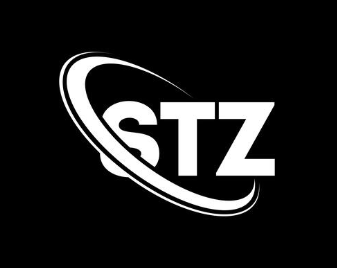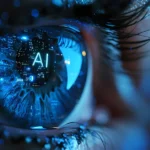Choosing the right AI platform for your business can be challenging with so many options available. Anthropic vs OpenAI presents a key decision for those looking to integrate advanced AI. While Anthropic focuses on AI safety and ethical governance, making it ideal for enterprises concerned with AI’s long-term impact, OpenAI offers more flexible, scalable solutions suited for various applications like content creation and customer support. If you’re torn between ensuring AI safety or leveraging a more versatile, general-purpose tool, this article will help you understand the core differences, guiding you to the solution that best fits your needs.
What is Anthropic and How Does It Work?
Anthropic, founded in 2021 by Dario Amodei, Daniela Amodei, and other former OpenAI researchers, is an AI research organization focused on creating safe and ethical artificial intelligence systems. The company positions itself at the forefront of AI safety and generative research, aiming to develop intelligent systems that can handle complex queries while ensuring they are ethically sound.
At its core, Anthropic works on the development of Claude, its advanced language model. Unlike other AI models, the key distinction of Claude is its ethical framework, a crucial element of Anthropic’s mission. The company employs a method called “Constitutional AI,” which ensures that the model adheres to human-defined ethical guidelines throughout its learning and fine-tuning processes.
The process of Constitutional AI involves embedding human-directed rules that help guide the AI’s decision-making. This approach involves iterative adjustments, where the AI model is continuously refined to generate more ethical outputs with every training cycle. This system allows Claude to self-monitor its behavior, ensuring that its responses align with the ethical values that Anthropic strives to uphold.
What is OpenAI and How Does It Work?
OpenAI is a leading AI research organization founded in December 2015 by Sam Altman, Greg Brockman, and Elon Musk, along with several other notable tech figures. The company’s primary mission is to ensure that artificial intelligence (AI) benefits all of humanity, prioritizing safety and ethical development throughout the process.
OpenAI focuses on developing powerful AI models and systems that push the boundaries of what AI can achieve. Its research spans a wide range of AI disciplines, including natural language processing (NLP), reinforcement learning, and robotics. One of its most significant contributions to the AI space is the development of GPT (Generative Pre-trained Transformer) models, which form the backbone of applications like ChatGPT. These models are designed to understand and generate human-like text based on the input provided, making them versatile tools for tasks such as writing, coding, and conversation.
Key Differences Between Anthropic and OpenAI
When comparing Anthropic’s Claude and OpenAI’s suite of generative AI tools, the choice largely depends on specific use cases, the nature of tasks, and the required capabilities. Both companies provide advanced AI models, but they cater to different needs and strengths. Below, we break down key differences to help you decide which platform may better suit your requirements.
1. Purpose and Core Strengths
Anthropic’s Claude is primarily designed for tasks involving content ideation, brainstorming, and basic text generation. It excels in applications like interpreting complex data, analyzing graphs, and extracting insights from uploaded images. It’s particularly useful for drafting preliminary text, such as reports or essays. Claude’s advanced hybrid reasoning capabilities, including the Claude 3.7 Sonnet, offer a more context-aware approach for handling detailed and nuanced tasks.
On the other hand, OpenAI’s offerings are more versatile and broader in scope. Their models, such as GPT-4, can handle not just text generation but also image creation, code generation, and even video production (via tools like Sora). OpenAI is also known for its strong conversational AIs, such as ChatGPT, that excel in natural language processing tasks like real-time, voice-based conversations via Whisper, as well as multilingual coding through Codex.
2. Versatility in Application
OpenAI’s models have a distinct advantage in versatility. GPT-4 and other variants can generate not just text, but also images and videos, making it a more flexible choice for diverse applications across multiple media types. Additionally, OpenAI’s models can access real-time information, unlike Anthropic’s Claude, which relies on historical training data.
Claude, while focused primarily on text-based tasks, has an edge in some areas. Its ability to process up to 200,000 tokens in a single input (compared to OpenAI’s GPT-4 model, which has a 128k token limit) is a significant advantage for handling large datasets or in-depth text generation. This makes Claude particularly well-suited for processing and analyzing larger documents, making it a good choice for enterprises dealing with voluminous data.
3. Ethics and Philosophy
A key differentiator between the two companies lies in their philosophical approach to AI safety and ethics. Anthropic was founded by professionals who left OpenAI, citing concerns about the lack of focus on ethical AI development. As a result, Anthropic places a stronger emphasis on AI safety, aiming to design models that adhere to higher standards of ethical responsibility. While OpenAI also takes steps to ensure ethical use, Anthropic’s focus on safety and reducing harmful biases in AI makes it a preferred option for those prioritizing responsible AI usage.
4. Customization and Flexibility
OpenAI offers more flexibility in customizing its models. Users can create custom GPTs tailored to specific needs, making it a highly customizable solution for developers and businesses looking for tailored AI tools. However, Anthropic is also moving toward flexibility, allowing Claude to integrate seamlessly with business tools and applications, though it doesn’t yet offer the same level of customization that OpenAI does.
5. Pricing and Availability
Both companies offer flexible pricing structures, with free plans for beginners and premium options for businesses looking to integrate AI into their operations. OpenAI’s paid plans generally offer access to a broader range of tools, including real-time internet access and more robust model capabilities. Anthropic offers similar plans but focuses primarily on larger context processing and security controls, which may appeal to privacy-conscious users.
Advantages and Disadvantages
When comparing Anthropic and OpenAI, it’s important to understand the advantages and disadvantages each platform brings to the table. Both AI research leaders are at the forefront of generative AI, but they take different approaches to model training, safety, and ethics. Here’s a breakdown of their strengths and weaknesses.
Advantages of Anthropic
- Focus on Safety and Reliability: Anthropic places a significant emphasis on AI safety, ensuring that its models are built to be both reliable and interpretable. Their flagship model, Claude, is trained using constitutional AI, a process that ensures the model adheres to ethical guidelines. This gives users more confidence in the accuracy and reliability of its outputs.
- Ethical AI Outputs: With its constitutional AI methodology, Claude strives to produce outputs that are less biased and more aligned with human ethics. By repeatedly fine-tuning the model based on human-generated rules, the system is designed to reduce hallucinations (incorrect information presented as facts) and provide more factual, ethical responses.
- Advanced Multitasking: Claude 3.5 Sonnet, for example, is capable of handling advanced reasoning, vision analysis, code generation, and multilingual processing. The system allows users to work in real-time, editing and interacting with its outputs to create solutions like code snippets or even website designs.
- AI Collaboration Features: Claude’s Artifacts feature creates a collaborative environment where users can directly interact with AI-generated outputs, making it easier to create and modify projects in real time.
Disadvantages of Anthropic
- Limited Image and Video Generation: Unlike OpenAI, Claude cannot generate images or videos. If your project requires such capabilities, you will need to turn to other tools, such as OpenAI’s DALL·E, or manually create the visual content.
- No Real-Time Internet Access: Claude does not have real-time access to the internet, which means it cannot fetch the latest data or conduct real-time research. While this can be seen as a benefit for some users in terms of safety and reliability, it limits the model’s ability to provide real-time updates or research for users who need access to the latest information.
Advantages of OpenAI
- Wide Range of Tools: OpenAI offers a broad suite of AI products that make it easier for businesses, developers, and individuals to work with conversational AI. With tools like GPT-3.5, GPT-4, and DALL·E, OpenAI provides a more expansive ecosystem, allowing users to seamlessly integrate AI into various workflows. Whether it’s through the API, web interface, or mobile apps, OpenAI’s offerings are accessible and versatile.
- Image Generation: One of the key advantages of OpenAI over Anthropic is its ability to generate images using DALL·E 3, which allows users to create visual content in addition to textual outputs. This makes OpenAI particularly suitable for projects that require both text and image generation.
- Real-Time Updates: OpenAI allows for real-time research and access to the latest information, providing an advantage in applications where staying up-to-date is crucial.
Disadvantages of OpenAI
- Potential Bias in Outputs: OpenAI’s training process involves reinforcement learning from human feedback (RLHF), which can inadvertently introduce biases in the model’s outputs. The process depends on human evaluators who must be consistent, honest, and free from bias, but this can be challenging to ensure at scale.
- Overreliance on Human Annotators: Since RLHF depends on human inputs for model training, the quality of the model’s outputs is contingent on the quality of the feedback it receives. This could lead to issues when human annotators provide inconsistent or biased feedback, affecting the performance of the AI.
Comparing the Models: Claude vs GPT-3.5
When it comes to conversational AI models, two of the most notable names in the industry are Anthropic’s Claude and OpenAI’s GPT-3.5. These models are both designed to facilitate human-like interactions but differ in their underlying technologies, applications, and ethical considerations. Let’s break down how these two models compare.
Claude: The Conversational AI with a Focus on Safety
Anthropic’s Claude model is designed to excel in natural conversation, making it particularly well-suited for applications requiring ethical and safe communication. One of the standout features of Claude is its emphasis on safety and ethical guidelines.
The model uses a combination of advanced technologies to ensure that it engages in meaningful and respectful conversations. Claude’s ability to remember previous exchanges in a conversation allows him to maintain a coherent and personalized dialogue over time.
GPT-3.5: The Model with Versatility Across Applications
OpenAI’s GPT-3.5, on the other hand, is a larger and more versatile model, capable of performing a wide range of language-related tasks beyond just conversation. It is known for generating human-like text that can mimic natural conversation, but its strengths lie in its ability to handle tasks such as language translation, summarization, and content generation.
GPT-3.5 is trained on an enormous dataset, giving it a broad understanding of language. This vast exposure allows it to tackle complex questions and create text across diverse topics. While it doesn’t have the same level of focus on ethical considerations as Claude, OpenAI has continued to improve the model to address these concerns in later versions, including GPT-4. Moreover, OpenAI’s API integration allows businesses and developers to use GPT-3.5’s capabilities easily for various applications.
Key Differences in Approach
While both models are incredibly powerful, their approaches differ significantly. Claude prioritizes safety, control, and transparency, making it ideal for sensitive or regulated environments where ethical AI usage is crucial. On the other hand, GPT-3.5 shines in its versatility, offering broad applicability across industries and tasks, even if its focus on ethical concerns is secondary.
Claude’s design makes it a strong choice for applications that require consistent, safe interaction, such as customer support or educational tools where user trust is paramount. GPT-3.5, however, excels in situations where high-level language processing and diverse use cases are needed, such as content creation, automation, and language translation.
Pricing and Accessibility
When comparing AI solutions from Anthropic and OpenAI, understanding the pricing and accessibility of each service is essential for businesses and developers looking to make an informed decision. Both platforms offer unique pricing models, but their approaches cater to different needs and types of users.
Anthropic Pricing
Anthropic’s pricing model is centered around providing custom solutions for large enterprises that prioritize AI safety. Since they tailor their services to each client’s requirements, pricing is not publicly listed. Instead, businesses engage directly with Anthropic to discuss their specific needs. The company creates packages that may include access to their Claude AI, workshops, training, and ongoing safety checks.
This model is ideal for large organizations that need bespoke AI solutions and are willing to invest in ensuring their AI systems are safe and aligned with industry standards.
OpenAI Pricing
In contrast, OpenAI’s pricing model is more accessible and flexible, catering to a wide range of users, from individual developers to small businesses. OpenAI operates on a credit-based system, where users pay based on how much they interact with the AI models like GPT-3.5 through the OpenAI API. Prices are determined by the complexity and speed of the tasks you request from the AI.
For example, users are charged approximately $0.0004 for every 1,000 words generated by the AI, though prices may rise depending on the specific usage requirements. OpenAI offers multiple pricing plans that allow users to scale their usage while maintaining control over costs. There’s even a free tier available for users who wish to explore the platform before committing to a paid plan.
Comparing Pricing Models
While both Anthropic and OpenAI provide tiered pricing models, their structures are quite different. OpenAI’s pricing is transparent and highly customizable, offering detailed plans based on API usage. This makes it easier for businesses to select a plan that fits their budget and needs. However, the various options available might require careful planning to avoid unexpected costs, particularly for businesses with fluctuating usage.
On the other hand, Anthropic’s pricing model is more straightforward, focusing on larger-scale, enterprise-level solutions with a focus on AI safety. While this approach may appeal to organizations looking for a simpler, more predictable cost structure, the lack of publicly available pricing means that potential clients must directly engage with Anthropic for accurate cost assessments. This can make the process slightly less transparent compared to OpenAI’s approach.
Final Thoughts
Both Anthropic and OpenAI offer powerful AI solutions but they cater to different audiences with distinct needs. OpenAI shines with its flexibility, affordability, and scalability, making it ideal for individual developers, startups, and small businesses. Its transparent pricing and variety of plans make it accessible and easy to integrate into a wide range of applications.
On the other hand, Anthropic stands out for its specialized focus on AI safety, ethics, and governance. It offers tailored solutions for large enterprises that require more customized, secure AI systems. While its pricing is less transparent, its value through bespoke services and a focus on safety makes it a preferred choice for business.








